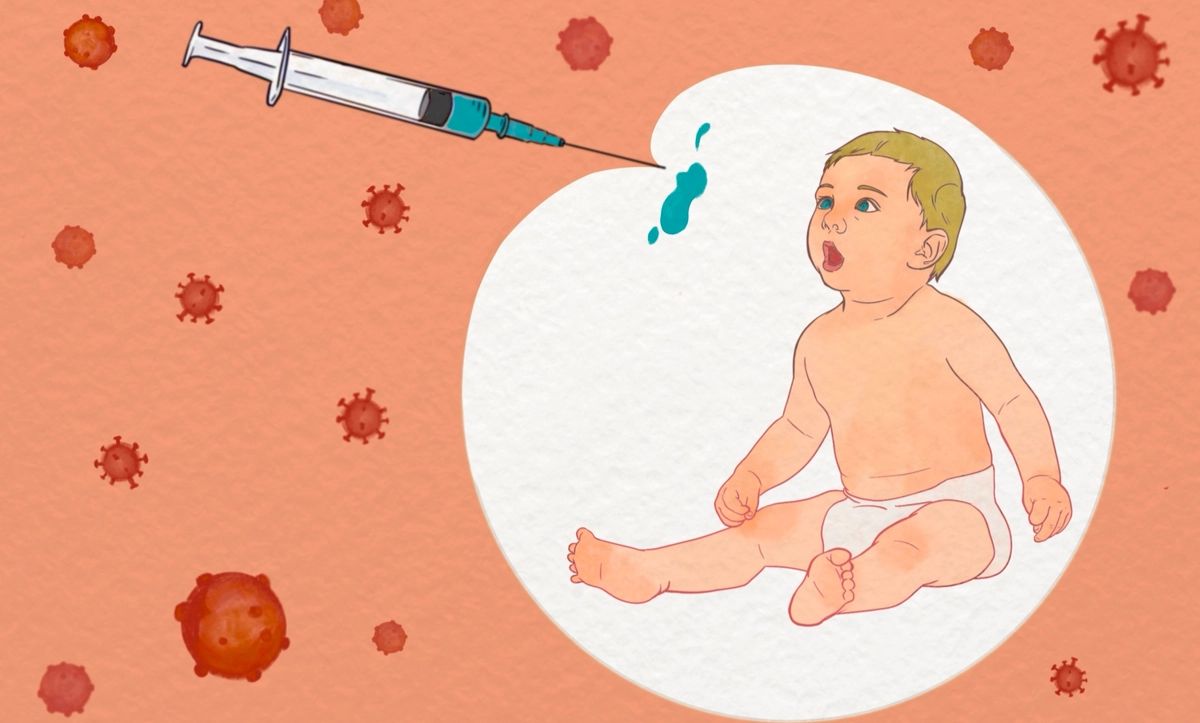Health
Unbelievable Revelation for Measles Vaccine Takers
This challenges the very foundation of what was once universally accepted about vaccines.

This article originally appeared on The Epoch Times and was republished with permission.
Guest post by Yuhong Dong
For many years, we’ve been told that the measles vaccine is responsible for stopping the spread of measles. Many even blame the occurrence of measles cases on low vaccination rates.
The message we often hear is simple: Thanks to vaccines, we are protected from disease. Yet our bodies are complex and do not always respond well to vaccines. Injecting a foreign substance can lead to dire consequences.
The primary focus of this article is to examine the principles and safety of measles vaccines.
Measles Recovery Possible Without Antibodies
The pandemic taught everyone the science of vaccines: They stimulate the body to generate substances called “antibodies,” which can fight viruses.
Scientists focus primarily on antibodies to measure immunity, yet the immune system is far more complex.
In the 1960s, a study that is now textbook-cited, shook the historical view that people need antibodies to eradicate the measles virus. Scientists were surprised that sick children without antibodies could still recover from measles.
These children had a congenital disease known as agammaglobulinemia, an immune deficiency where the children cannot produce antibodies.
Surprisingly, they recovered from measles just as well as others.
The children showed the typical symptoms of measles and developed natural immunity. Although no measles antibody was detected in their blood, they were able to effectively eliminate the virus since their other immune functions, including innate immunity and T lymphocyte function, were intact.
Further analysis showed that having anti-measles antibodies in the blood was unnecessary for recovering from the illness or preventing reinfection.
This revelation challenges the very foundation of what was once universally accepted. The cornerstone upon which the vaccine industry has been built—the indispensable role of antibodies—is not as critical as we’ve been led to believe in our fight against measles.
If a virus can be eliminated without antibodies, it logically follows that antibodies are not essential. This concept aligns with a fundamental principle in logic: A universal statement can be falsified by a single genuine counter-instance, as suggested by the renowned Austrian philosopher Karl Popper.
Furthermore, T lymphocytes play a general command role in adaptive immunity when the body battles a measles virus infection. It is not surprising to find that when the T lymphocytes of children aren’t functioning correctly, it can lead to fatal measles-related disease.
However, the positive role of a vaccine in stimulating T-cell immunity is minor and can even be detrimental, as reported.

Our Miraculous Immune System
With multiple layers of complex defenses from molecules to cells, our intricate immune system works tirelessly day and night to protect us against viruses and bacteria. This natural immunity functions regardless of whether we’ve been vaccinated.
Our miraculous immune system provides a robust first line of defense, starting at the epithelial surface, a thin layer of flat cells in the lungs, gut, and eyes. The measles virus is mainly transmitted via our respiratory tract, where mucosal epithelial cells interfere with the virus life cycle by automatically secreting an interferon substance that puts the cells into an antiviral state.
There are a variety of other immune cells, each with unique skills to fight viruses.
This raises an intriguing question: How does introducing an external measles vaccine designed to stimulate antibody production affect our complex natural immune defense?
Is it possible that some vaccines may be creating more problems than benefits? This is likely the case with the measles vaccine. Before introducing specific vaccine issues, a brief history of measles vaccines will show how they may be interconnected.
History of Measles Vaccine
The measles virus has a high mutation rate, which is typical of RNA viruses. Their replication process isn’t very accurate and they lack mechanisms to correct errors, which means that when a virus replicates, it doesn’t produce exact copies of itself but instead generates a lot of slightly different versions, like a diverse family of viruses. This can rapidly change in ways that make vaccines less effective.
In 1954, virologist John Enders and pediatrician Thomas Peebles successfully cultivated measles virus for the first time in human kidney tissues. The measles virus from an 11-year-old boy named David Edmonston became the first vaccine source, known as the “Edmonston strain.”
The first version of the attenuated measles vaccine is a product of three years of work by Mr. Enders, including 24 passages through human kidney tissue culture, 28 through human amniotic cell culture, six in fertilized hen eggs, and 13 in chick embryo cell cultures. The modified Edmonston strain resulted in a robust antibody response but no fever, viremia, or rash in injected monkeys.
In 1963, both an inactivated (“killed”) and a live, attenuated (Edmonston B strain) measles vaccine, as described above, were licensed in the United States. Both were abandoned in the next two to four years due to a high frequency of recipients with fever and rash for the attenuated vaccine or lack of protection with the inactivated version.
In 1964, a live and further attenuated (Schwarz strain) vaccine, a product of additional 85 passages of the Edmonston B strain, was tested in a Nigerian trial. The trial confirmed that the “further attenuated” vaccine was superior to the Edmonston B vaccine and caused significantly fewer instances of fever and diarrhea. It was used in countries outside of the United States.
In 1968, another live and further attenuated (Edmonston-Enders strain) vaccine was licensed in the United States. This further attenuated live version, often combined with mumps and rubella (MMR), or mumps, rubella, and varicella (MMRV), became the primary vaccine used for measles.
‘Atypical Measles’
The first licensed inactivated (killed) measles vaccine in the United States was discontinued after four years of use (1963 to 1967) when it was found to offer only temporary immunity and vaccinated children later infected with measles developed severe reactions known as “atypical measles.”
This sounds quite similar to COVID-19; those who were “up to date” with their vaccinations were also found more likely to get infected.
A 1967 JAMA study reported that 10 children who had previously received an inactivated measles virus vaccine experienced an atypical measles illness five to six years later.
The illness presented with a two- to three-day severe fever, headache, and muscle or abdominal pain. The degree of headache can often suggest central nervous system involvement. Brain dysfunction was indicated in one patient with evidence of disturbed electrical activity on a brain EEG. Almost all of the children experienced severe complications, including edema and pneumonia.
The rash was distinctly different from a rash developed from natural measles. While a rash in natural measles typically appears first on the face and spreads down toward the neck, trunk, arms, legs, and feet, the rash pattern in atypical measles usually manifests in an opposite order. It generally begins on the distal extremities, such as the ankles and wrists, and involves the palms and soles of the feet, with subsequent spread to the trunk, often sparing the face.

These symptoms suggest an acute, disseminated response to the injected measles vaccine.
Among the cases was a 6-year-old girl who developed severe atypical measles several years after vaccination and was hospitalized with pneumonia and an unusual rash. The rash progressed with a unique concentration over the right gluteal region, believed to be the site of the 1961 intramuscular injection of inactivated measles vaccine.
Some may say that the current measles vaccines are no longer killed but are live vaccines. However, the key insights from the phenomena of atypical measles is that the vaccines may counteract our immune system’s natural way of fighting the virus, which could cause an unfavorable outcome.
A 2018 PLoS One study indicated that the risk of measles was associated with children aged 12 to 23 months who had received the measles vaccine. Even though the precise diagnosis of those breakthrough cases was not provided in that article, atypical measles cases have also been reported in several Indian outbreaks from 2006 to 2009.
Friend or Foe?
Administering measles antibodies to some children following virus exposure aimed to avert the onset of measles and was reported as early as in 1960. Initially this approach appeared to be successful, as these children did not develop rashes, which are commonly associated with the infection.
Similarily, to reduce symptoms associated with the first version of attenuated measles vaccine, doctors often gave measles-specific antibodies (immunoglobulin) with the vaccine, which the U.S. Centers for Disease Control has recommended. While this approach mitigated the apparent reactions to the live virus, such as fever and rash, it posed potentially serious consequences.
A 1985 Lancet study indicated a significant correlation between injected measles antibodies and unexpected long-term immune disorders.
Some children received measles antibodies after exposure to the virus to prevent measles. As an immediate outcome, they didn’t have rashes, a typical sign of measles infection. However, not having a rash with measles can lead to immune system disorders in adulthood due to prolonged immune disturbances.
The study stated that when antibodies are injected during a measles virus infection, they may interfere with the body’s natural immunity, particularly the T cells’ ability to kill the virus. As a result, the virus may survive better and remain hidden in the body, leading to relapse and more problems later. The author cautioned against using immunoglobulin after measles exposure.
Immune disorders that may be associated include arthritis, lupus erythematosus, multiple sclerosis, pericarditis, thyroiditis, connective tissue disease, Crohn’s disease, seborrheic skin disease, bone degenerative diseases, and certain tumors.

Measles rashes are a vital sign that the body’s immunity, especially killer T-cell immunity, is effectively fighting the measles virus. T-cell immunity is crucial in combating viruses that penetrate our bodies beyond the mucosal barrier.
Similarly, vaccine-generated antibodies may have the potential to trigger immune responses that could harm our body or interfere with our natural immunity. Such dysregulated immunity contributes to atypical measles and associated complications after vaccination.
-

 News3 days ago
News3 days agoRAY EPPS EXPOSED: Never-Before-Released FBI Interview Uncovered
-

 News2 days ago
News2 days agoFBI Again Warns of Potential Terror Attack in US, “Not That Different” from Concert Attack in Russia
-

 News15 hours ago
News15 hours agoUS Births Alarmingly Slide to Lowest Level Since 1979, Failing to Exceed Replacement Rate
-

 Opinion2 days ago
Opinion2 days agoStrange Details Resurface Surrounding Speaker Mike Johnson and His Son



















